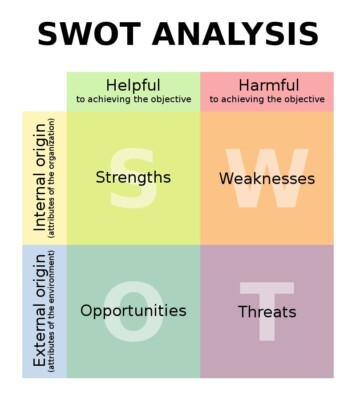Writing your first business plan a guide for marketing students, Building Design Tips, Online Advice
First Business Plan a Guide for Marketing Students
22 Sep 2021
What Is a Business Plan?
This is an adaptable document that answers all questions related to a certain business endeavor and provides a comprehensive view of the company’s performance. The text gets edited along with changes in current plans and strategies.
The document outlines the steps necessary to implement the project, covering the following aspects:
- Initial investments’ assessment:
- How big is the startup capital?
- What financial inflow would it take to implement the project?
- Market analysis:
- What is the current situation on the market?
- How big is the competition the endeavor could face?
- What market share can it take?
- Costs:
- What resources are necessary for implementation?
- What expenses will the implementation incur?
- Income: what income to expect from the sale of goods or services (sales forecasts).
- Financial outcome: what profit is it possible to get (the difference between income and expenses)?
- Financial analysis:
- What are the timeframe for implementation and the invested funds return?
- What are the financial predictions for the project?
- Extra data on design, target audience, etc.
The finished strategy should provide a complete picture of the project, from an early-stage analysis to development prospects.
Business students learn how to write business plans for startups and big and small companies. Getting these skills is essential, and there are still some classes that need their attention while the time is scarce. In terms of a students’ life, to get essay help, you can address paper writing services. This is something a good manager would do.
Elements of a Business Plan
To draw up such documents correctly, study each of these sections in detail:
- introductory part;
- description of goods and services;
- market analysis and marketing strategy;
- production aspect;
- organizational aspect;
- financial strategies and budgeting;
- expected results, risk assessment, and development prospects.

photo by Xhienne – SWOT pt.svg, CC BY-SA 2.5, https://commons.wikimedia.org/w/index.php?curid=2838770
How to Create a Business Plan Yourself
Before drawing up a presentation or a strategy, assess the current situation and work with this information. One of the best technologies for preliminary analysis, especially for small enterprises, is the SWOT analysis. It is the element that interlinks the strategic view with reality. The analysis results show how realistic one’s predictions are.
SWOT stands for:
- Strengths – benefits that the project has.
- Weaknesses – disadvantages of the strategy and possible adverse effects.
- Opportunities – chances that the project has for improvement and eventual success.
- Threats – things that may endanger the project.
The same type of analysis could be applied in different areas, even in studies. Yet, it is always an option to get help with any writing. For example, one could hire an essay writing or a physics homework helper to keep their grades up while focusing on business studies. Finally, despite the fact that this section is smaller than the rest and takes around one page, the analysis process itself is complex and will take a while.
Spice It Up a Bit
Remember, a business plan is not a boring document theocratizing the project course. Write for the teams that are going to work according to this plan, for the PR and advertising managers, CEOs, and other stakeholders. Use professional but simple language. Remember, it is a roadmap, not a get-off-my-hands description.
Order of Writing
- Summary. Start with a short description of the project and give an insight into its development. The resume should take no more than 1-2 pages. Some prefer putting this block as a final one.
- Capabilities. In this chapter, explain what you want to sell and how you are going to solve the problems (satisfy a specific need) in your market. Also, pay attention to the description of the target audience and main competitors.
- Implementation. How are you going to leverage an existing opportunity and launch the project based on it? This is the place to describe the marketing and sales plans, operations, and success metrics.
- Team and company. In addition to the attractive ideas, investors are also looking for good teams of specialists. Talk about the existing personnel and list the specialists to recruit for the project. If the project has already been launched, provide information on the legal form and location of the company.
- Financial analysis. Give a brief financial forecast. Tell the investors about the profits and payback period.
- Additional Information. Include product images and extra data on its design in this section.
To Sum It Up
A good business plan is a tool that can help build a more efficient and profitable business.
This is a flexible document that you will come back to from time to time. As you get to know your customers, identify the strengths and weaknesses of chosen marketing strategies. Evaluate the accuracy of the budget forecasts.
Yes, it is not a one-time job. You will constantly make changes to your business plan. A business plan defines the goals you want to achieve, so use it to track progress and adjust the course.
Comments on this Writing Your First Business Plan – Guide for Marketing Students article are welcome.
Edinburgh Architecture
Sciennes Primary School Building, south of the city centre
Sciennes Primary School Edinburgh building extension
525 Park View, Ferry Road, north of the city centre
525 Park View, Ferry Road homes
Comments on this guide to Writing Your First Business Plan article are welcome.

